EN

Climbing as a form of sport has been around since the 19th century. Originally an almost aristocratic practice, its progressive democratization led to an explosion in popularity in the 80s and 90s. In Portugal, the lack of big mountains didn't help to sow interest in the sport, but since the pandemic, the growth of climbing has been dizzying. We visited two bouldering gyms* in the city and accompanied climbers in the mountains surrounding Porto.
*climbing practiced on small rock formations or artificial walls
The city's rock garden
Porto Climbing
Nuno Topas Gonçalves talks to someone below him, his fingertips bleached by magnesium powder, on a rough rock wall that is like a dance partner to whom he puts his face. The pose is light and natural, like a mountain goat that has stopped mid-climb to look at the landscape. The founder of the Porto Climbing group identifies himself as belonging to a “second generation” of climbers - not because his parents practiced climbing, but because he learned the technique from a first wave of climbers who were looking to Western European countries for lessons in a sport imbued with respect for the natural world.
"I learned from a group of friends who discovered an interest in climbing in the Scouts, but soon set out to found something focused solely on the sport. It was the Núcleo de Montanha de Espinho, created at the end of the 1990s, but I only joined them in 2001," recalls Nuno. Since then, he has done his own training in European countries with a mountaineering tradition, but he still maintains that what helps him most now, as a guide for Porto Climbing's climbing excursions, is his background as a Physical Education teacher: “you need to know how to advise, how to guarantee safety for those who are practicing for the first time”.
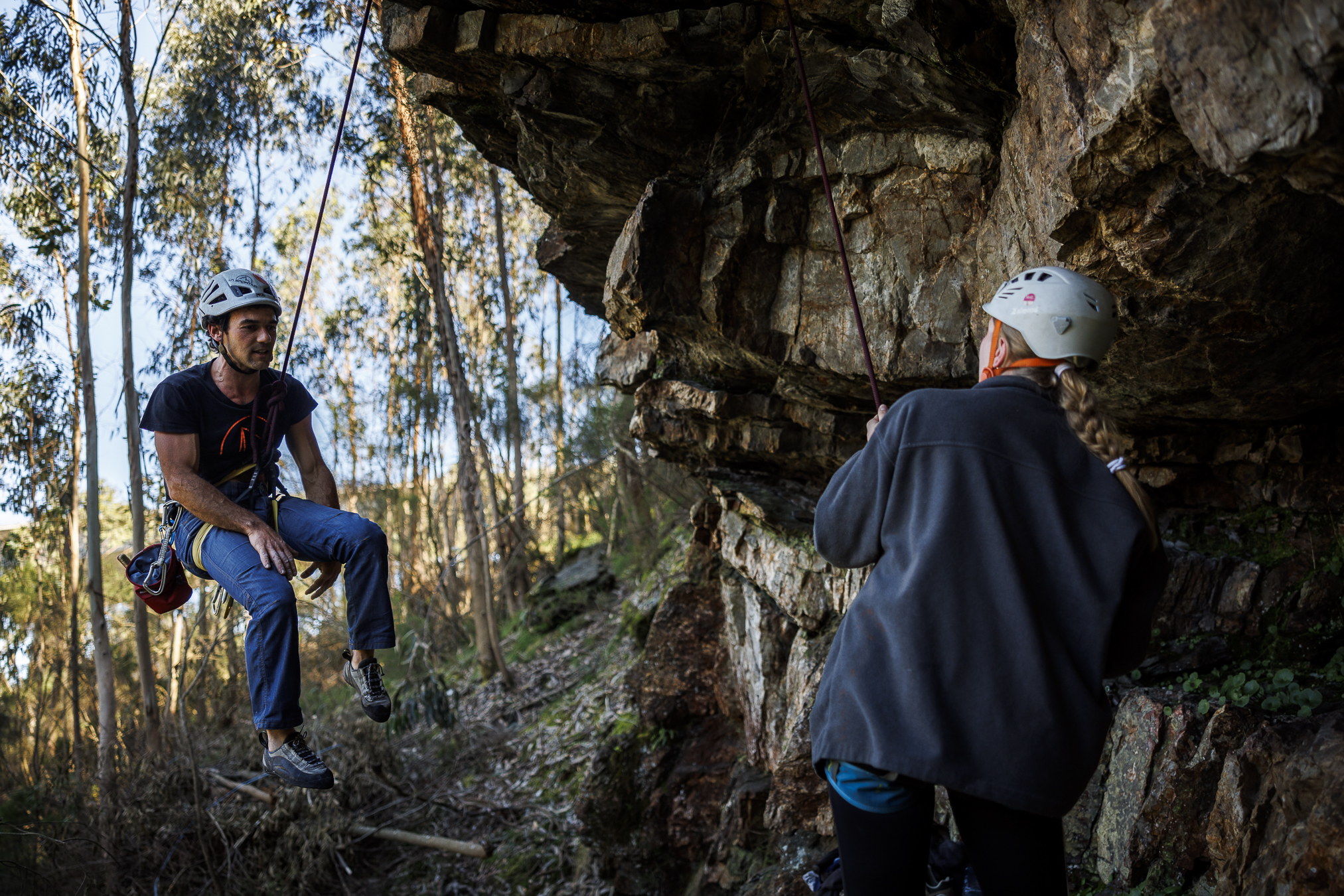
© Guilherme Costa Oliveira
In addition, he proudly states that "the [group's] first status is to promote and publicize mountain sports, and the second is to make people aware of how to be on the mountain, in balance, and not to litter. In fact, to leave it cleaner - even today, before we started climbing, we were collecting garbage that had been left by someone who had come here for a picnic."
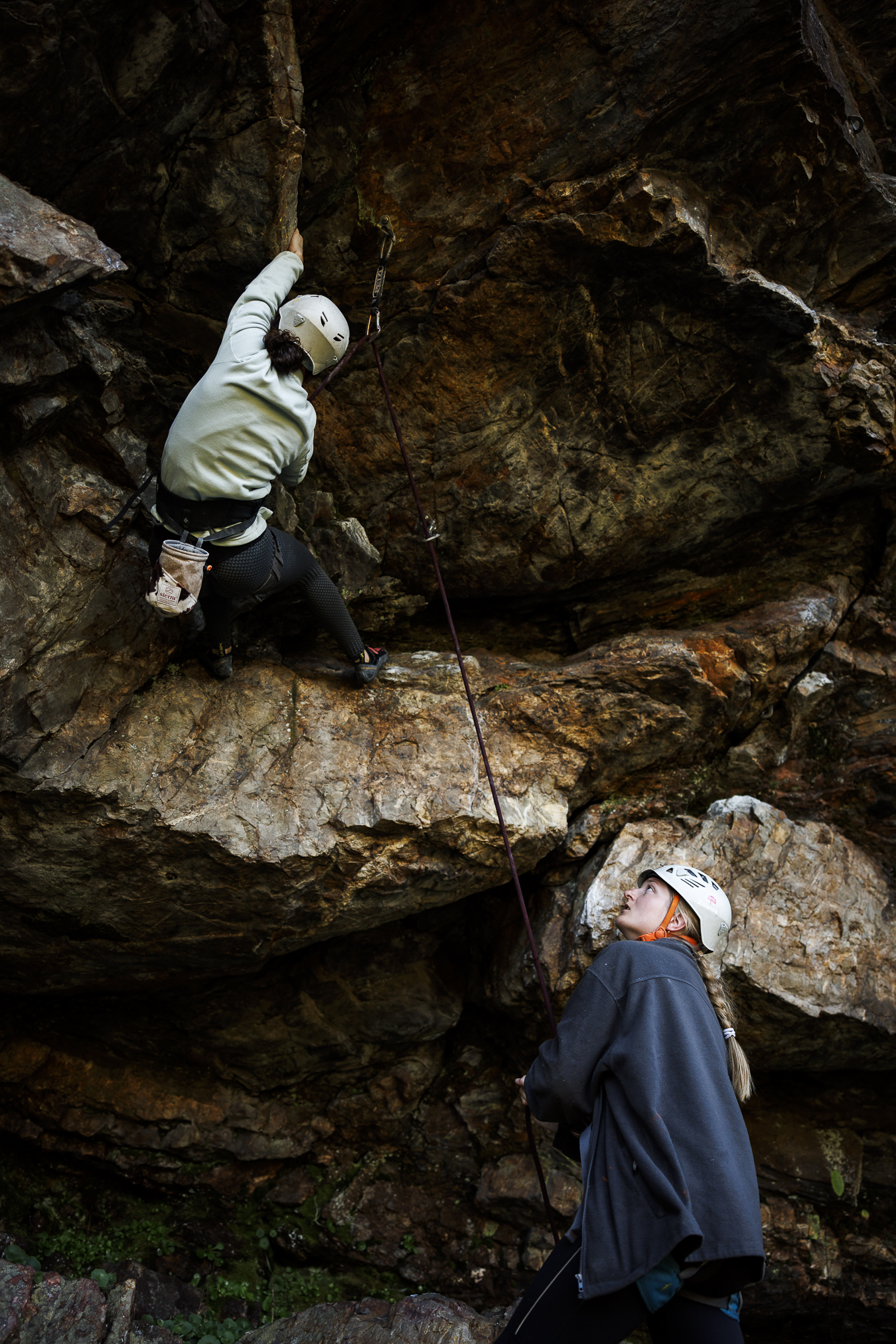
© Guilherme Costa Oliveira
Porto Climbing's outings take place around Porto. The extensive lung of mountains in Valongo has ideal rock faces - Senhora do Salto, Parque das Serras do Porto and Serra da Boneca. This area also has a geological diversity that allows for different profiles and textures of rock faces: "We can just as easily find schist as granite or quartzite. We just have to start heading further south to find limestone." In addition to these areas in the metropolitan area, the excursions also frequently go to destinations such as Serra da Freita, in the district of Aveiro, and Serra d'Arga, in the district of Viana do Castelo. For those interested in taking part, “the price is 30 euros per person, but includes insurance and all the equipment: helmet, harness, ropes, magnesium”, and it is always recommended to bring your own cat feet - a special climbing shoe with a pointed toe and curved sole, usually worn two or three sizes smaller than the usual size.
In addition to the individual outings - which always take up half a day or a day - there is the possibility of taking the lead climbing course, a way for climbers to gain autonomy in climbing, learning how to use all the equipment, and how to use the steel guides nailed into the rock by those who design these routes, attaching the rope as they climb, thus allowing a safe ascent and an easy descent for those who follow. This autonomy, however, is always relative. Nuno emphasizes the social component of this sport, depending on there always being a climber on the ground to provide the security of a counterweight on the other side of the rope, should there be any slips.
Even so, he says that what attracts him to climbing is not the adrenaline: "people think it's all about strength, but it's not. There's a lot of balance, dexterity and an important mental side: it puts you in uncomfortable situations and forces you to do problem solving, to find ways and strategies to overcome the transition from one position to another." This dimension of overcoming is unanimous among the practitioners we followed on this sunny Sunday afternoon. Lourenço, in the first lesson of the course, admits that he has vertigo, and feels that practicing has helped him. Monique, who has been practicing for two years, stresses that “it gets easier and easier to climb as you improve your technique, as you find your balance” in what she admits is a kind of “yoga against the rock”. And Rita highlights the all-round aspect of the sport, as it works different muscle groups.
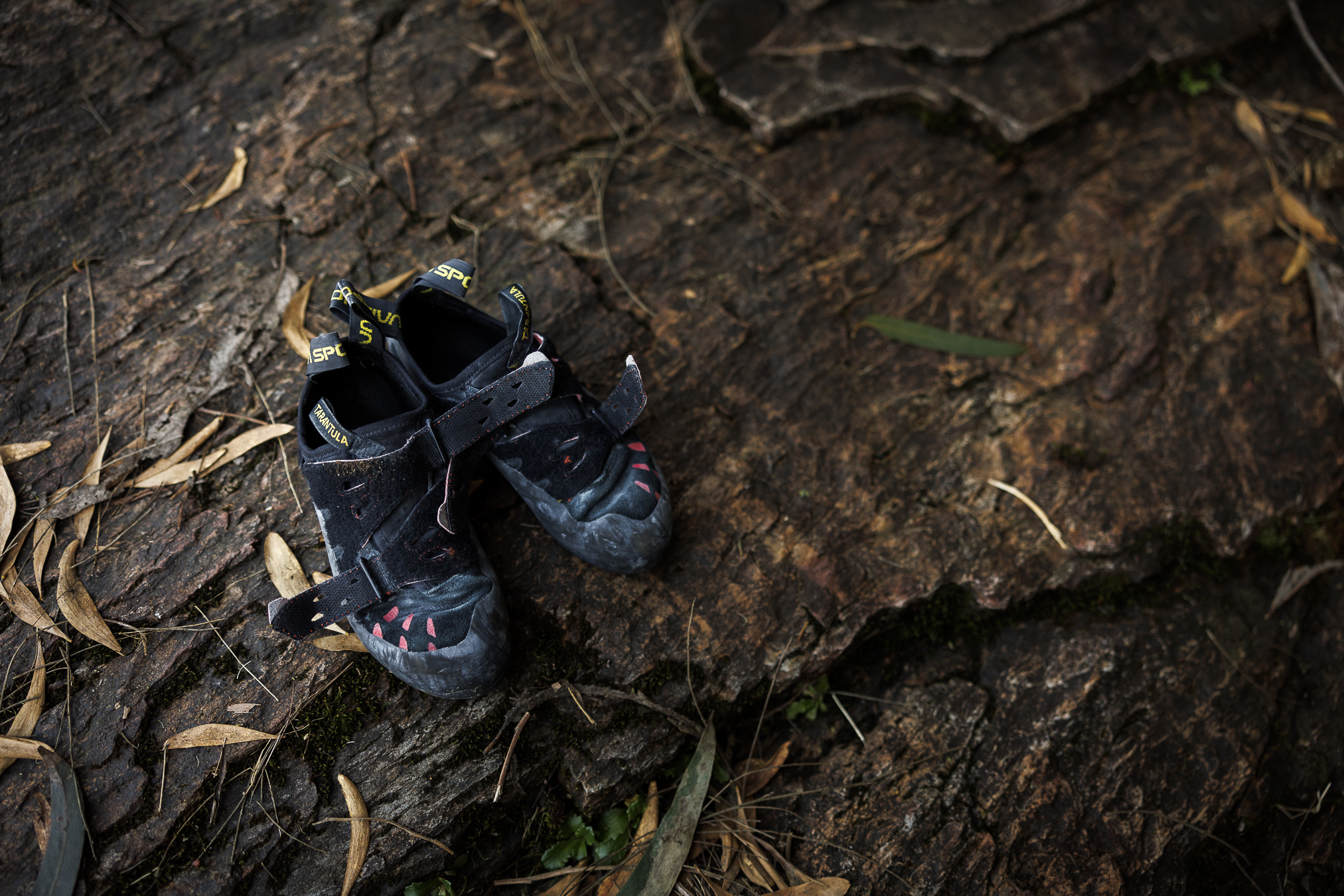
© Guilherme Costa Oliveira
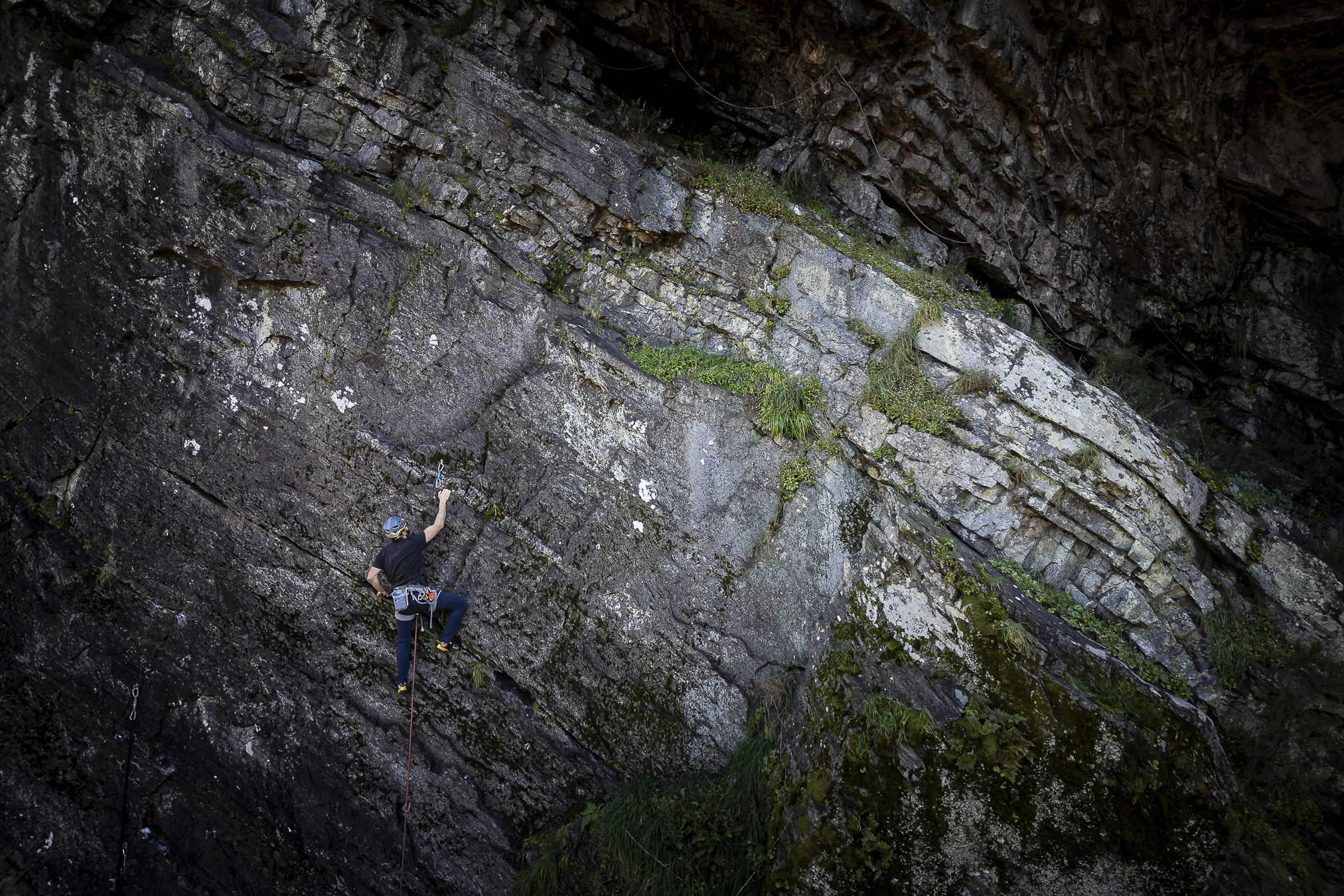
© Guilherme Costa Oliveira
Uphill on the Via Norte motorway
The North Wall
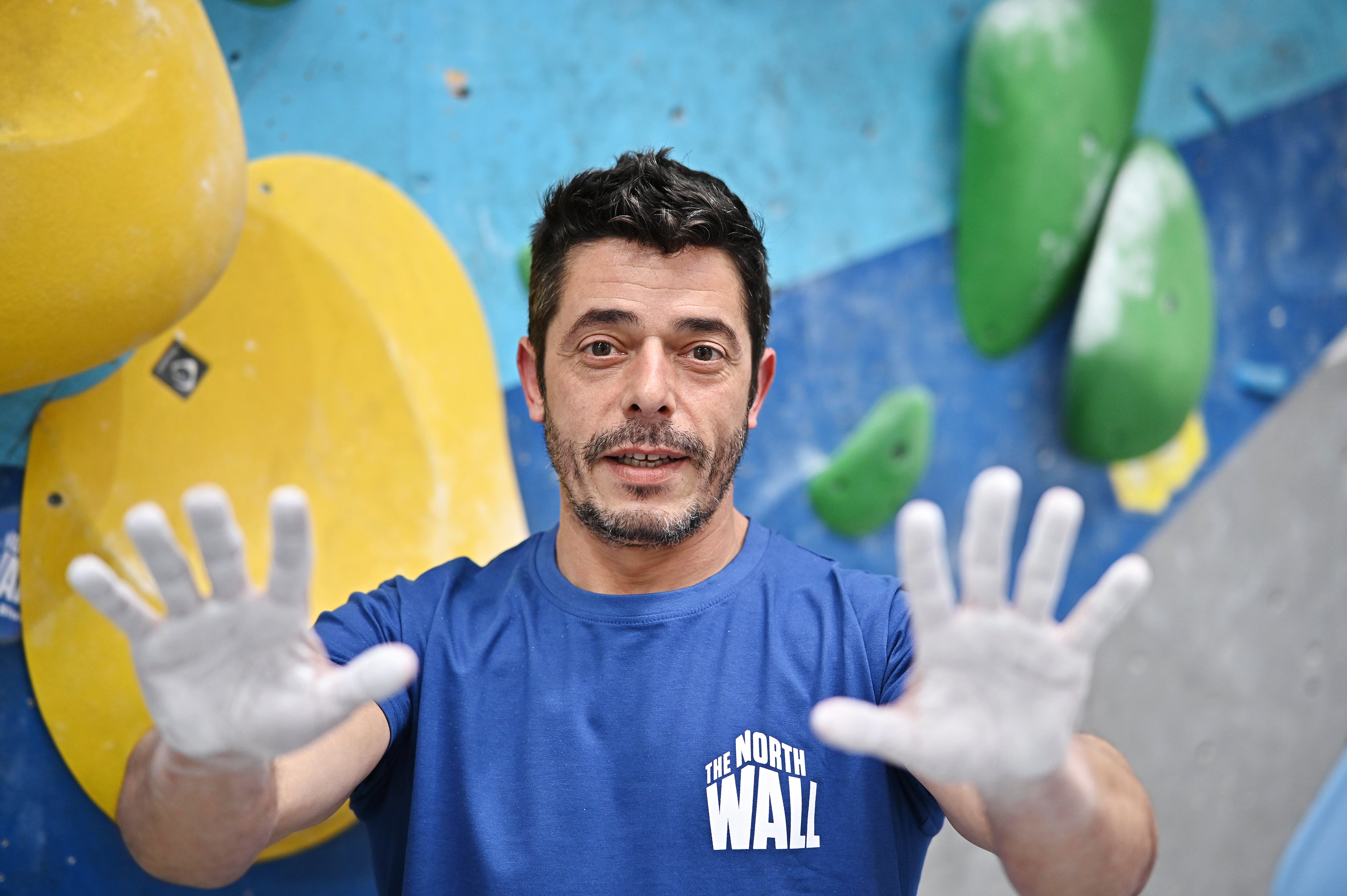
© Rui Meireles
A bouldering gym (which means “rock”), at first glance, looks like a kind of amusement park. Large mattresses are flanked by improbable walls and structures, with angles and corners that resemble a particularly challenging geometry exercise. These structures are dotted with “tusks” (small fiberglass protuberances) in all the colors of the rainbow. But here, a trained eye sees more than splashes of color - each hue indicates a challenge: those who opt for the orange route (medium difficulty) will only be able to lean on the fangs of that color.
One of the first gyms of this type to open in Porto was The North Wall, on May 5, 2021 - in the middle of the pandemic. Nuno Santos, one of the founding partners, moved to Porto from Leiria for the best of reasons: “I fell in love with a girl from Gondomar”. When he got here, he noticed that there was hardly any indoor climbing on offer, so he had to train with CEM - Clube de Escalada da Maia. This is one of the ancestral organizations of the spread of climbing in Portugal, but as Nuno points out, “it's a members-only club”. “In Lisbon there was already a lot of climbing open to the public, but here it was a market that was clearly going to grow.”
This growth has taken place and “every day there are new clients who show up to try it out”, and the reasons Nuno finds are simple: “one of the great advantages of climbing is that you're working your whole body almost without realizing it, whereas in a typical gym you're on one machine at a time to work different areas”. In addition, as is usual in this type of gym, the routes defined by the trainees are changed every week, introducing variations into the routines of those who practice. This range of possibilities is enhanced by a warehouse with a ceiling height of 9 meters: “It was the tallest warehouse we could find, but we're looking for something with even more space.”
Today, North Wall holds the distinction of being the only gym in the city where it is possible to climb with a rope, something valued by those who migrate from practicing indoors to climbing outdoors. Nuno estimates that only around 30% of his clients migrate outdoors, and the most immediate advantages are that they are not dependent on the weather, and that they can practice for a short time after work. You can also find a kilter board at the North Wall - a digital jump in an inherently analog discipline: it's a mechanical wall with a variable slope and fangs that light up to identify the challenge route to be climbed.
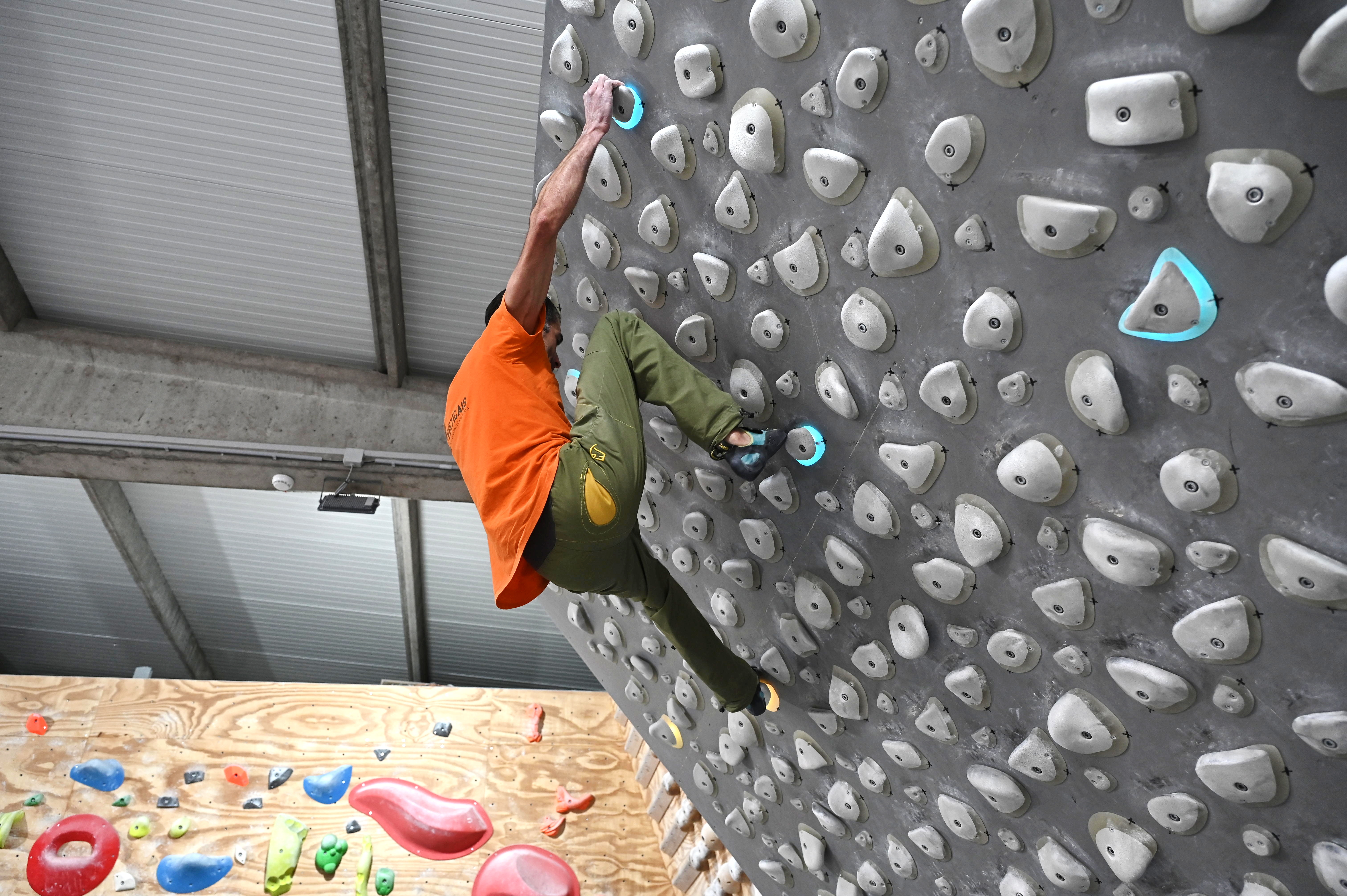
© Rui Meireles
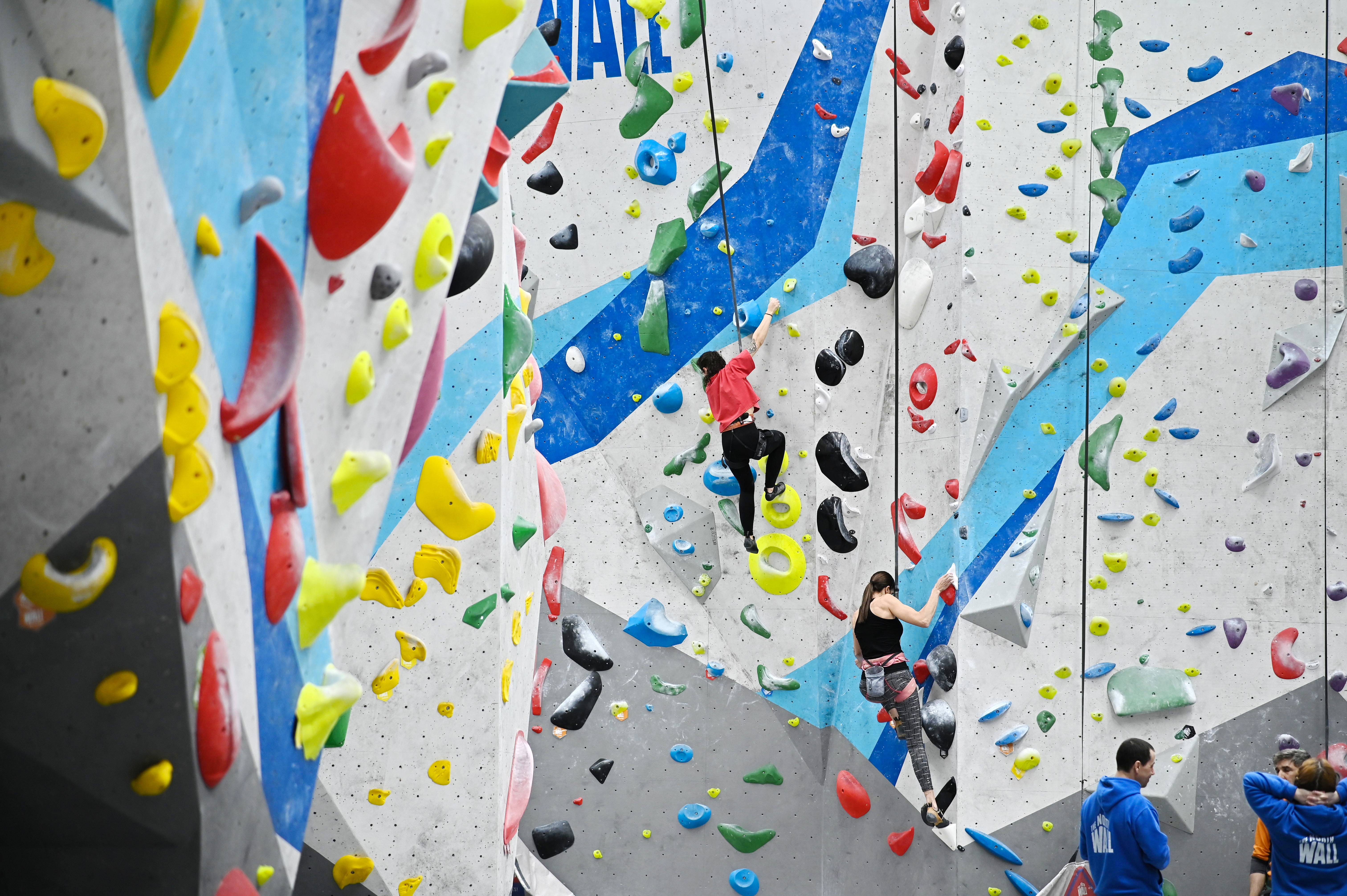
Rocks of São Roque
São Rock Climbing
Luísa Xavier, from Ouro Preto, Brazil, arrived in Porto with a rock under her arm. She moved to Porto to study for a master's degree in Education, choosing as her subject “Climbing as a space for education, citizenship and political participation”. Already a fan of climbing in Ouro Preto, a world reference in the sport, she didn't find it easy to do outside Porto: “It rained a lot here, and I ended up having to go to Lisbon several times to go climbing”. So he came up with the idea of filling this gap by opening his own business.
In addition to the partners he found to found São Rock Climbing, he also found “two emotional partners” who always supported the project: Mr. Joaquim, the mechanic in the warehouse next door, and Maria José, the landlady of the São Rock warehouse, who "on opening day, brought some quiches for us to sell. After all, we had to have money to pay the rent! (laughs)". The opening took place at the beginning of the pandemic, just a couple of months before The North Wall opened. Luísa recalls that it didn't receive many tourists at the time, but mainly locals, and that this “brought a family atmosphere, also fostered by Mr. Joaquim and Mrs. Maria José, which still persists today, even looking at the reviews written on Google”.
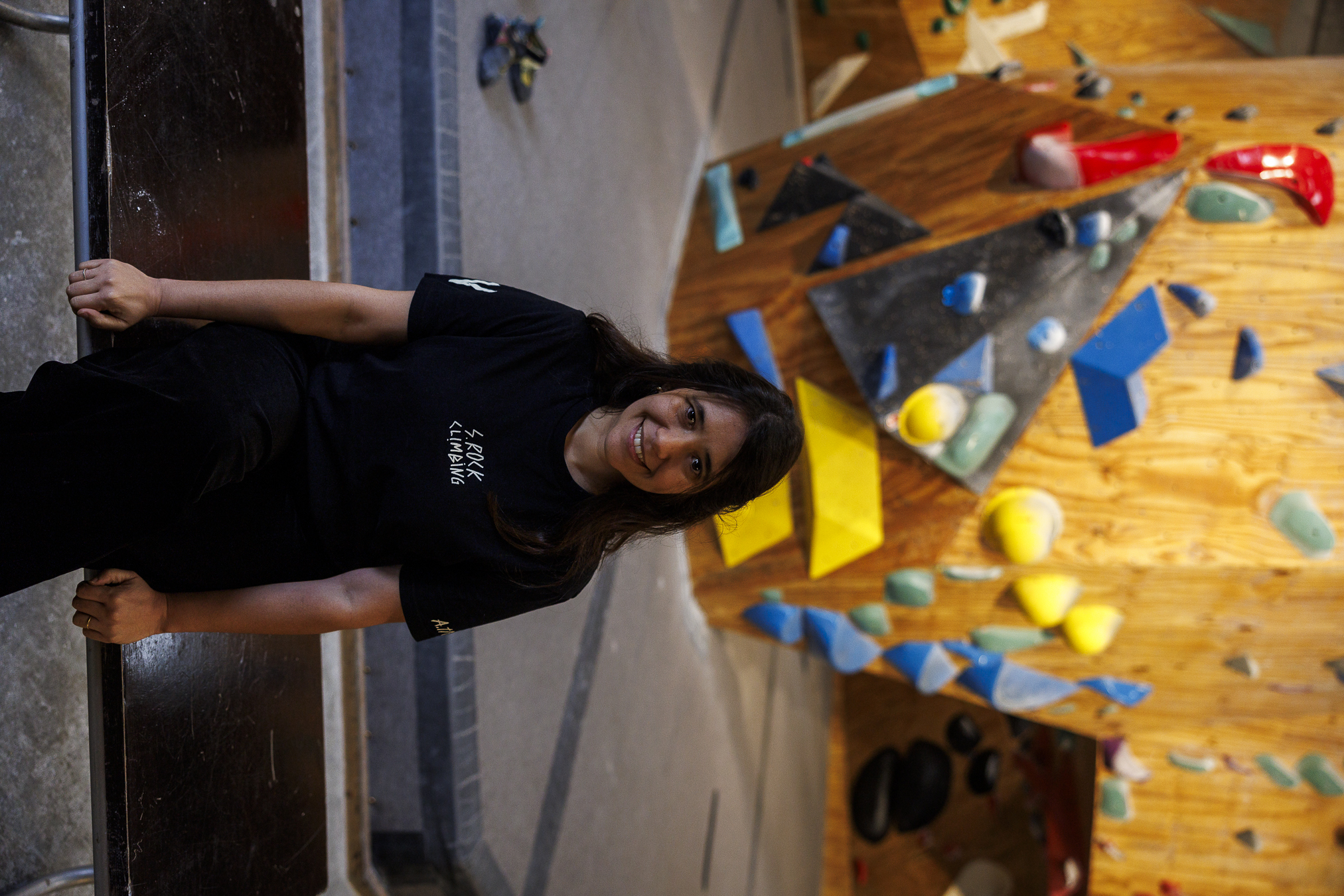
© Guilherme Costa Oliveira
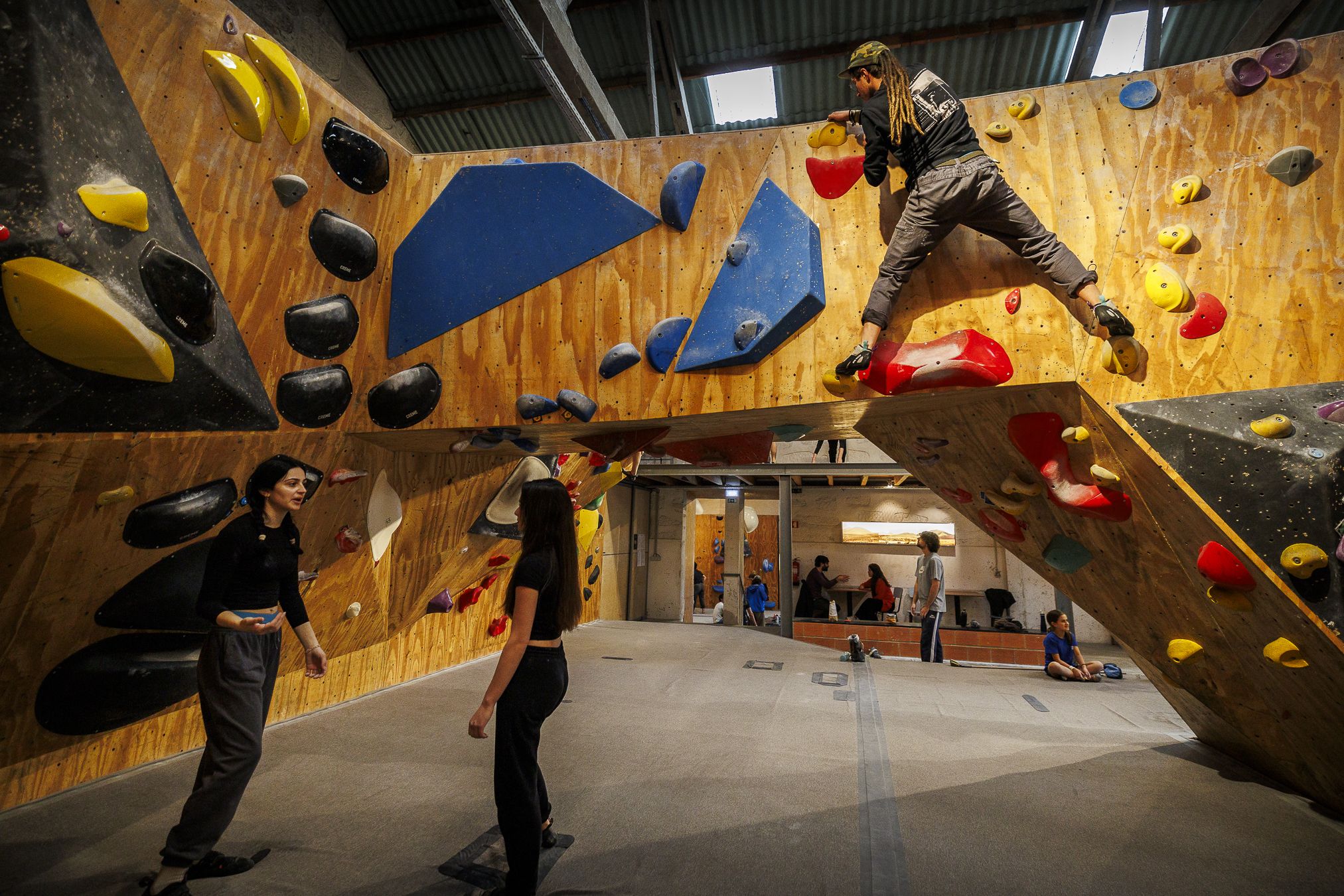
© Guilherme Costa Oliveira
The biggest surprise, after the opening, was to see how many artists were using the space: “they later explained to me that Porto has a very active art scene, with lots of artist collectives”. Perhaps this too contributed to them starting to use the (few) non-climbable walls to host exhibitions, mostly photographic.
A year after the opening, Luísa's master's thesis is the motto for following, in 2018, the preparation of athletes for the 2021 Olympic Games in Tokyo - the first time that bouldering has been included as an Olympic sport. When I interviewed the athletes, they all seemed to share the same concern: that approval as an Olympic discipline could bring a strange dimension to climbing: competition. “Although climbing is individual and you take full responsibility for your performance, this is a very communal sport,” says Luísa.
But competitiveness didn't seem to damage this joyful, shared nature of climbing. So much so that today São Rock is the parent company of PICO - Porto International Climbing Organization, a club with federated bouldering athletes, which was also formed in partnership with other gyms. Among the athletes who make up PICO is Sofia Cabaço, who in March this year was distinguished as an Olympic Hopeful by the Portuguese Olympic Committee - a distinction that includes financial support for the development of her potential.
Sofia, a native of Braga, had already tried ballet and gymnastics, but none of these disciplines came close to the fascination that climbing exerted. For her, it's easy to pinpoint what grabbed her: "that moment of creativity, of choosing where I'm going. Realizing where I can hold on and pushing myself to move on to the next position; I like that mental side". She already knew São Rock through the venue's annual competition, São Bloc, supported by Ágora. Shortly afterwards, the opportunity arose to join PICO and train with André Rainha - Luísa Xavier's partner and also the founder of Creme, a company that manufactures fiberglass tusks. Sofia's goals for the future are clear and bring a smile to her face: "the Olympic Games in Los Angeles in 2028. I'll be old enough to compete!"
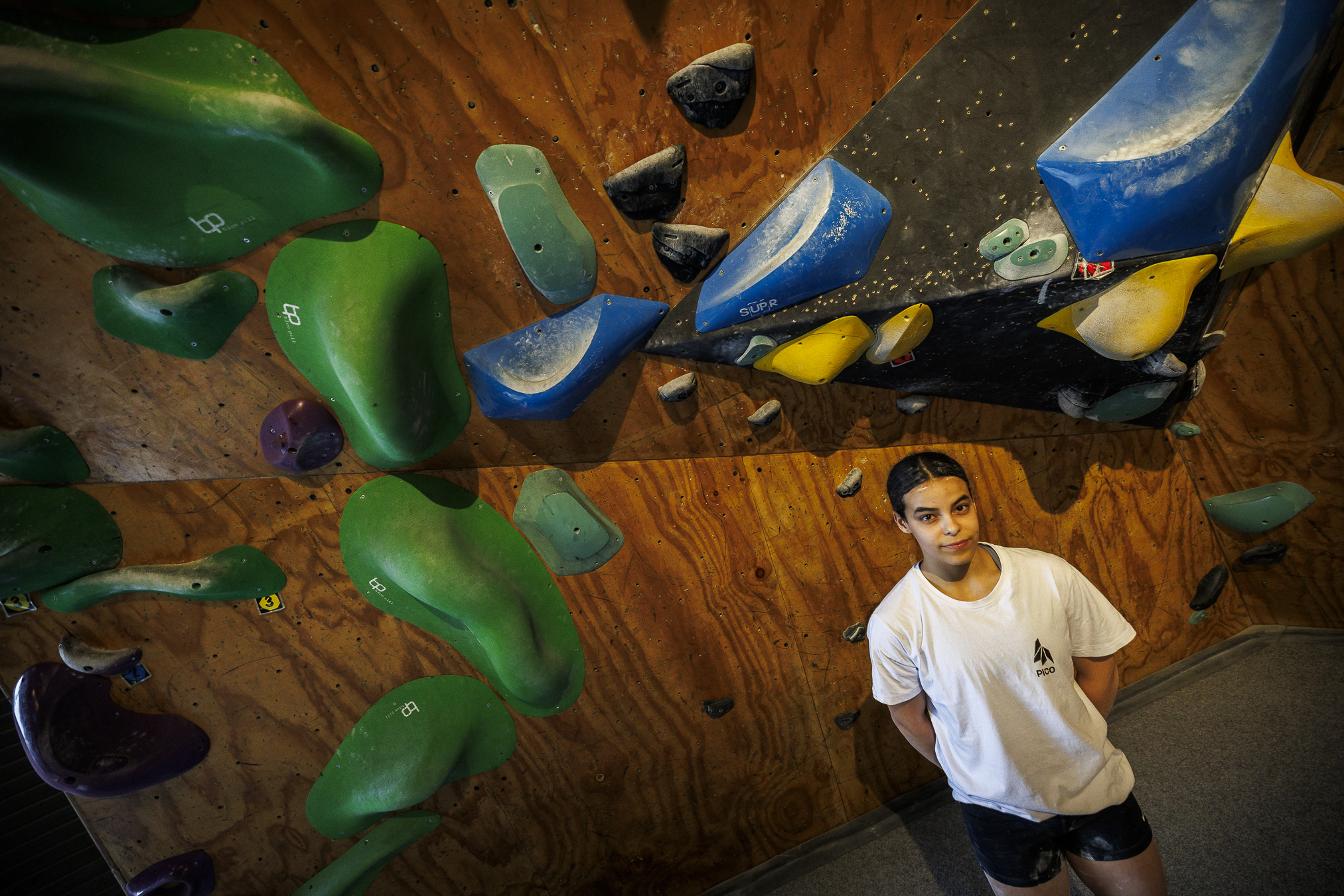
© Guilherme Costa Oliveira
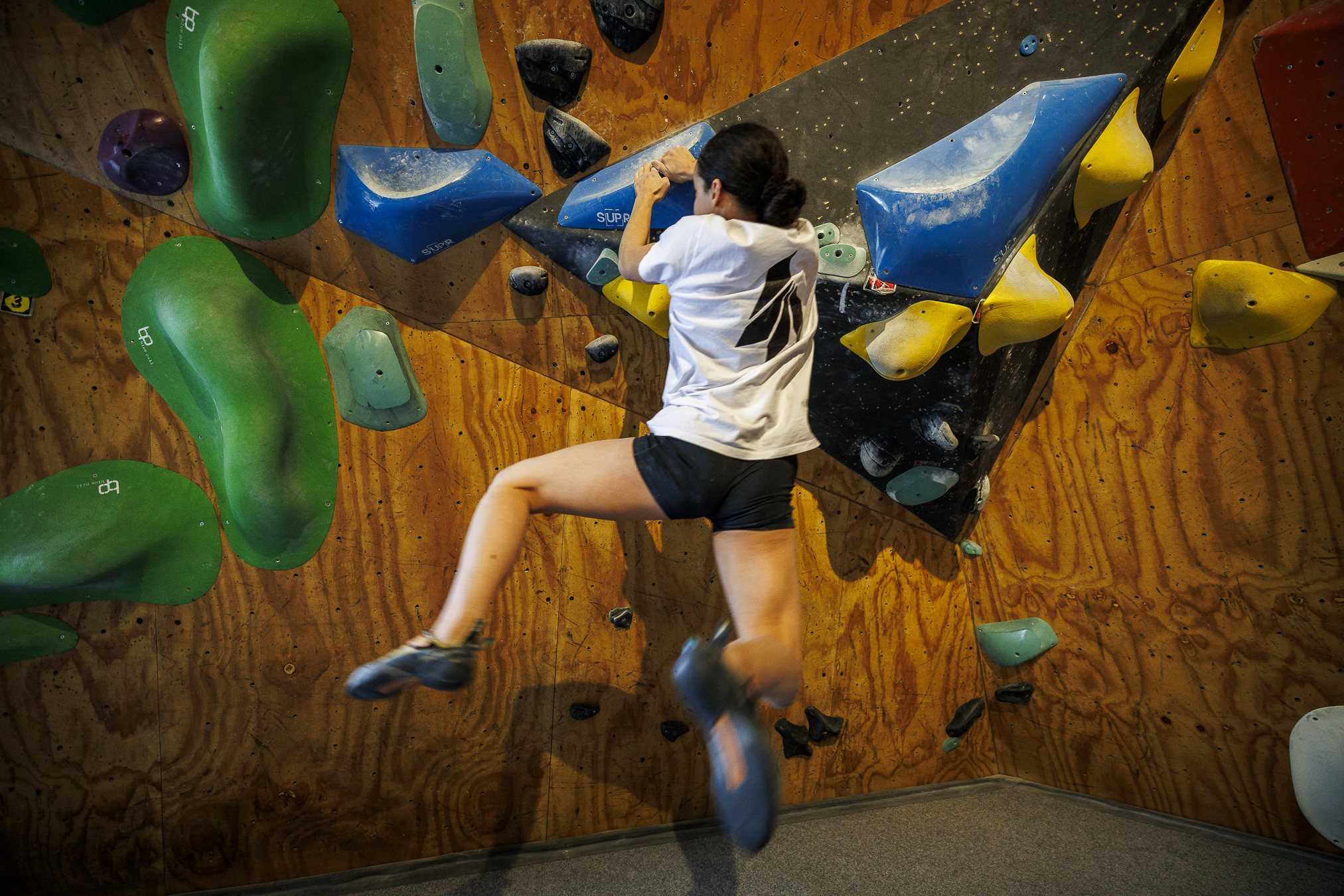
© Guilherme Costa Oliveira
Share
FB
X
WA
LINK
Relacionados


